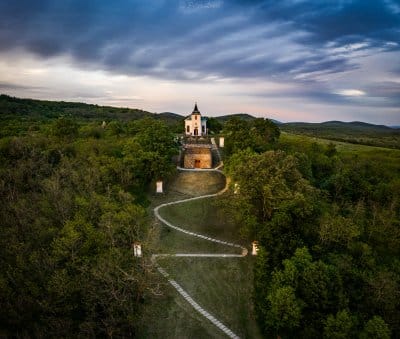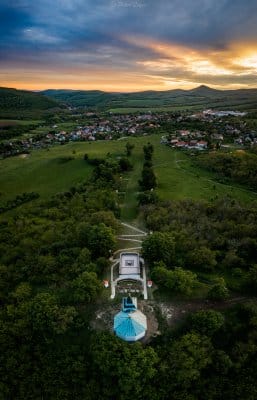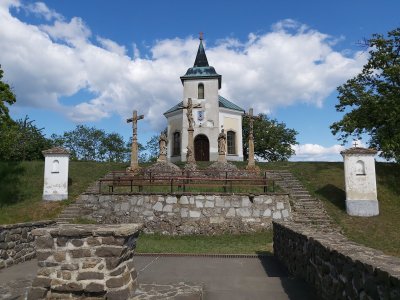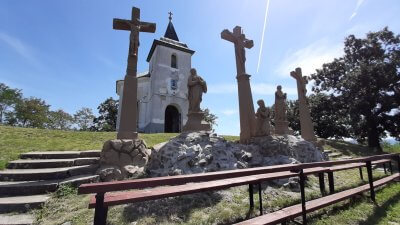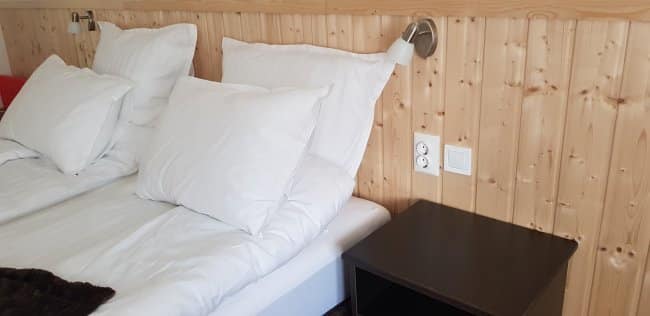Calvary
The village of Márianosztra boasts one of the most spectacular Calvary in the Danube Bend. The Calvary Hill, which rises on the eastern edge of the village, has been crowned by a group of Baroque statues and a small chapel since the 18th century.
The Calvary was built by the local Pauline monks, who consecrated the site of the Calvary crosses in 1756 and erected the 16 stations in 1759 by monks Gergely Szluha and Péter Kopacsek. In the same year, the first pilgrims arrived on the Way of the Cross. In 1771, the wooden crosses were replaced by limestone ones. The Chapel of the Holy Sepulchre was also built at this time, and in 1777 the Chapel of the Calvary was built slightly above it. It acquired its present bastion-like appearance in the 20th century. The chapel, octagonal on the outside and round on the inside, is a replica of the statue of Pieta in Sasvár.
Walking along the Calvary Hill, you can see lime trees over 250 years old, planted by the Pauline monks. One of the old trees is called “The Hole Tree” because its trunk is now only held up by its bark. The hilltop is also worth a walk for the panoramic view. The rolling volcanic forms of Börzsöny in the foreground overlook the houses of Márianosztra, and standing in front of the chapel you can just see the regular cone of Nagy-Galla, while to the north the bare top of Bald Mountain closes the horizon.

